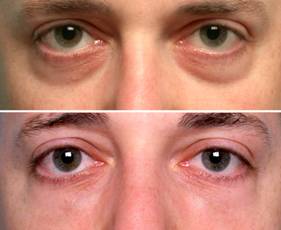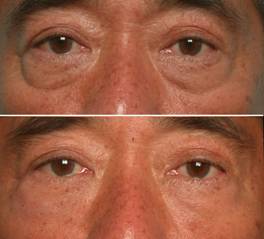|
 |
| |
Restylane®, Perlane® and Juvéderm®
Until recently most surgeons saw the aging face as a problem of excess
tissue. Traditionally, surgery was designed to remove this excess, puffy tissue. However, if you study the
aging face you’ll realize that a lot of what we perceive as an "old” face has to do with fat deflation or
a loss of fullness. Over time the face deflates like a balloon losing air. Just like a smooth grape becomes a wrinkled
raisin, the face loses its vigor as the skin thins and fat is lost. Understanding facial structure The skin of the face is
attached to the underlying bone in certain areas of the face by ligaments. In
the area of attachment, there is a particular loss of fullness over time. If we look at the face in these areas of attachment
we can often see furrows or grooves along them. See figures below:
|
|
| The position of ligaments on the bone. |
|
|
| The position of bony ligaments with face superimposed. |
|
|
| Ligaments attach to facial tissue. |
|
|
| Ligament attachments can create/accentuate the appearance of "bags". |
Old school of thinking for addressing "baggy"
areas of the face Patients (and unwary surgeons) used
to think that lifting the tissues and excising the fullness is the best way to smooth out bags and pouches. Unfortunately,
this just stretches the skin tighter and creates hollowness by removing the full area. There is some
improvement, at least for a while, but in the long run the face looks stretched, sunken in and unnatural: that is the surgical
look of traditional eyelid lifts. Instead of restoring a youthful fullness to the face, the surgery makes them look older
and more tired than they are. See figures below:
| Top: Before quad blepharoplasty. |
|
|
| Bottom: Following traditional blepharoplasty eyelids are too hollow, creating an aged look. |
A new approach to restoring facial youthfulness We believe that we need to fundamentally re-examine the way we think about facial aging, and
therefore re-think our approach to facial cosmetic surgery. While there is still a major role for surgery, the main
focus of improving the aging face should be to restore the fullness that is lost and improve the elasticity of the skin.
| Top: "Bags" accentuated by ligament attachments. |

|
| Bottom: Hollowness was eliminated with injectable filler. No surgery was performed. |
Hyaluronic acid: the safest and most effective filler we have seen We
have evaluated a number of fillers over the years, temporary and permanent type fillers. We are fundamentally opposed to injecting
any permanent material in the face: it is short term gain for potential long term misery. If a permanent type filler is placed
in the face and the patient does not like the appearance, or if there is any other type of problem with it, there is no way
to get the permanent material out. The new hyaluronic acid fillers, such as Restylane®, Perlane® and
Juvéderm®, have revolutionized this field. These crystal clear gels are made of natural
sugar molecules that are already in the body. They can be shaped and sculpted in the tissues. The effect lasts 6-12
months, depending on the product, which provides an opportunity for ongoing maintenance. And because the face changes over
time, the treatment is allowed to gradually adapt to the ongoing changes that occur in the face.
Which areas can be treated? Many
areas of the face can be improved. The first use of these materials, and still the most commonly performed in most cosmetic
centers, is the area around the mouth: thin lips, turned down corners of the mouth, and nasolabial folds can often be improved
significantly.
|
|
| Lines are evident on patient's R; filler injected to patient's L provides instant improvement. |
|
|
| Before filler is injected, lips and nasolabial folds are deflated. |
|
|
| Immediately following injection of filler to lips and nasolabial folds. |
What about the eye area? Restoration of
the area around the eye is very delicate. In fact, patients are often told that it is too hard to treat and it can’t
be done. We have developed a technique that we call LAMLE (Ligament Attenuation Modification by Layered Expansion).
See figure below:
|
|
| LAMLE: Tiny threads of Restylane® are layered to produce an artistic and appropriate reshaping. |
Ultrafine hair-like threads of Restylane®,
Perlane® or Juvéderm® are layered to create an artistic
reshaping and sculpturing of the deflated tissues around the ligaments.

|
| Injecting filler using the LAMLE technique can improve significant bags. No surgery was done. |
Restylane®, Perlane® and Juvéderm® work hand in hand with Botox® and skin treatments such as laser skin rejuvenation
and chemical peels. Sometimes these treatments are combined at one visit, sometimes they are staged over several visits. Restylane®, Perlane® and Juvéderm® can also be combined
with surgery for complimentary improvement. _____________________________ Scheduling a treatment or consultation is easy! Call us at (310) 278-1839 Or contact us by email
|
|
|